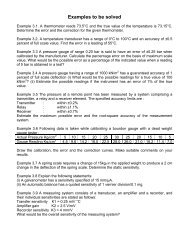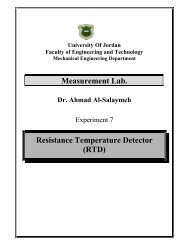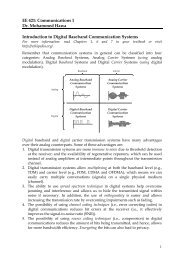Simulation of Third Generation CDMA Systems - Virginia Tech
Simulation of Third Generation CDMA Systems - Virginia Tech
Simulation of Third Generation CDMA Systems - Virginia Tech
You also want an ePaper? Increase the reach of your titles
YUMPU automatically turns print PDFs into web optimized ePapers that Google loves.
Chapter 2W<strong>CDMA</strong> Physical LayerThis chapter provides a layer 1 (also termed as physical layer) description <strong>of</strong> the radio accessnetwork <strong>of</strong> a W<strong>CDMA</strong> system operating in the FDD mode. The spreading and modulationoperation for the Dedicated Physical Channels (DPCH) at both the links is illustrated in detailsince it is the most essential part <strong>of</strong> the simulator that we implemented. The uplink anddownlink data structure for the DPCHs is described. The spreading and scrambling codesused in both the links are investigated. The spreading modulation and data structure forPhysical Random Access channel (PRACH), Synchronization Channel (SCH), etc. aredescribed in detail in [5] and [6] along with those <strong>of</strong> the DPDCHs.2.1 Physical Channel StructureW<strong>CDMA</strong> defines two dedicated physical channels in both links:• Dedicated Physical Data Channel (DPDCH): to carry dedicated data generatedat layer 2 and above.• Dedicated Physical Control Channel (DPCCH): to carry layer 1 controlinformation.Each connection is allocated one DPCCH and zero, one or several DPDCHs. Inaddition, there are common physical channels defined as:9
















